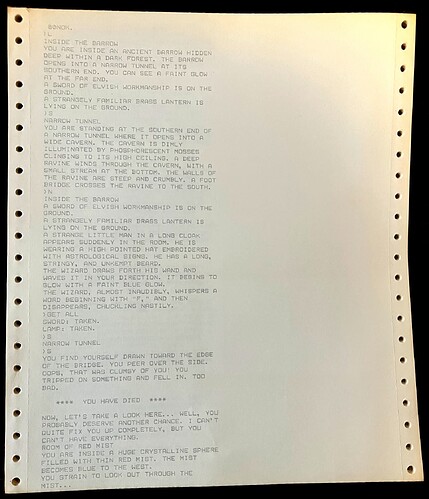a small program which, according to my knowledge, was integrated into the disks you got (which also contained the game).
Correct!
In the end, it seems that despite their inability to reach a wider crowd because of lack of graphics, graphical games were not Infocom’s strongest point, and ultimately caused their downfall.
Well, that’s a whole argument and it can go on forever. :) The lack of V6 games in the modern (post-Infocom) era is simply because it’s much harder to support V6, so very few interpreters did it.
Also, for the first several years of Inform’s existence, there was no standard way to distribute Z-machine graphics. So even if you wrote a V6 game and created art for it, almost nobody would be able to play it properly.
Here, I’m not sure whether to call it “IF”, “Interactive Fiction”, or “text adventures”.
There’s no good answer to that because popular usage changed from year to year. Remember that even Infocom didn’t start using the term “interactive fiction” until 1984.
Choose Your Own Adventure (CYOA) games like Journey
People generally limit the term “CYOA” to actual books. Back in the 80s, “Choose Your Own Adventure” referred to a specific line of books; I don’t think it was ever applied to computer games.
Today, the term still applies to a specific line of books, and the current trademark holder is pretty draconian about cease-and-desisting anybody else who tries to use it.
Games like Journey (and Twine games, etc) are most often called “choice-based” these days.
